An Action Research Study into Online
Instrumental Music Teaching
Vicki Swan 2004
Back to Home
Introduction
This investigation has combined two different areas; online tutoring and
a passionate interest in teaching music and bagpipes. There have been
many investigations into online communities and learning with technology,
but very little has been written in combining the far more traditional
area of musical instrumental teaching with online technologies. Information
for this study has been gathered from a variety of sources, some online
and some face to face;
- http://www.mudcat.org
An online music community that exists to discuss folk and blues music.
- http://groups.yahoo.com/group/bellowspipes/
An online newsgroup for bellows playing pipers around the world.
- The Lowland and Borders Pipers Society
A society for Bellows Pipe Players
- The library and of course the internet.
The purpose of this research was to investigate instrumental
teaching within the online environment. This paper focused on two distinct
variations of online technology; online community1
and the internet2. It looked at how
these two disciplines can support the learning of the Scottish Smallpipes
online. Scottish Smallpipes were chosen because there are relatively few
pipers and real piping communities and, as a result, there are fewer alternative
resources available to Scottish Smallpipe players. The Scottish Smallpipes
is an instrument close to the Scottish heritage. As such, most teachers,
communities and schools tend to exist in a small geographical area. Emigration
and cultural inquisitiveness has meant that there are pipers all over
the world, yet their numbers in any given area are not great enough to
support more facilities. It is hoped that this research will help to evolve
Bagpipe teaching and playing online to a level of communication that is
not yet available to these people.
Personal action research performed prior to this paper has suggested that
online technology could be a highly effective vehicle for teaching music.
This paper addressed the following hypotheses which in turn, will increase
an understanding of this ‘effectiveness’.
- It is possible (in the first instance) to teach instrumental
music online.
- Community affects the success of learning an instrument online.
- It is possible with multimedia to cater for a variety of different learning style.
This investigation used Action Research and took place as reflection and evaluation teaching undertaken in the first instance from a web site specifically built for the purpose. This web site was created after 2 years experience of building five different instrumental teaching web sites for an online educational community. The main area of research took into account the audio / visual / textual learning styles of learners, whilst also looking at the available technologies. The data was gathered in the form of e-mails and audio files. The criteria for success for the participant was the ability to learn tunes from the web site and included a qualitative element through feedback of the learner’s experience. To investigate the role of online community within this study, the entry point for the web site was placed within a variety of different places, in community (mudcat.org) in newsgroup (bellowspipes newsgroup), single e-mails and in person. Interpretation of the learner’s responses gave an insight into the role of community within the online learning environment
Critical
Review of the Literature
In order to assess instrumental teaching online it was necessary
to look at the main theories and concepts of it’s two constituent
parts; computer technology and music teaching. Both areas were covered
independently as there was negligible literature in the collective field
of teaching instrumental music online.
The Technology
The evolution of computer based technology has been very swift and is
still developing. This speed of development is none more apparent than
when looking at literature where an issue of importance in one moment
appears to become a thing of the past in the next. Ten years ago Mason
(1994) talks of audio graphic systems requiring two phone lines being
of great value but unrealistic. Brooks (1997) talked of problems with
too much web traffic slowing down the internet and of potential storage
devises that hold more than CDroms (ie DVDs). Within 6 years of Brooks,
broadband is available to nearly 80% of the UK population (British Telecom
2004) and DVDs are a standard storage media. This advancement has outstripped
all expectations of these writers and the developments are so impacting
on the virtual world that much of the earlier research no longer has relevance.
In pre-multimedia environments, the resources available to content creators were limited and as a result it was both hard to create content that was engaging and hard to create resources that were interactive. As can be seen in one of the Open University’s course books about using the computer as a tutor the O.U. state that...
“...95% of commercially available computer software in reading and language is of the sort where the student is drilled, taught or managed by the computer” (Anderson 1990:40)
“Those who subscribe to these systems will benefit, while those who somehow miss out will be even more isolated” (Bainbridge et al 1988:33)With faster internet, greater storage capacity and new technological revolutions comes more diverse opportunities for all walks of technological life including teaching and learning. As computers became powerful enough to employ multimedia, they allowed the scope for video, audio and community to explode. These developments have opened the door for all sorts of disciplines to embrace technology that would not have seen the technological relevance before. Williams discusses the fact the
“...multimedia technologies may just prove to have significant and permanent educational value” (Williams 1998:159)As with many new technological developments the facility precedes the optimum function. The harnessing of the multimedia possibilities comes with the understanding of it’s place in peoples lives. Heppell (1994) understood the value of multimedia as a way of enabling learning in online environments and discussed the fact that just as real life learning uses a plethora of audio and visual stimuli so can multimedia on a computer.
“Logically it would be more sensible to assume that, as is the case in our everyday lives, all these elements would always be present. We might then ask in what circumstances might it be appropriate to leave something out (when should we exclude text, or when might video be abandoned for example), to good effect. If life is generally a multimedia experience, our normal computer based, learning environment should be too.” (Heppell 1994:153)It should be noted that the development in technology alone does not solve or overcome learning barriers. Warren (1997) developed an online learning environment which provided the breadth of tools to make a successful community with very limited bandwidth and technology. He was creating a community for a developing world market with much inferior tools and noted that:
“...all software on the market was designed for use in the western world, where computers were common and problems such as unreliable ISPs and slow phone lines are (almost) a thing of the past. So we decided to write our own, a piece of software, that required no downloads, worked in a web browser, allowed five kids to use one computer simultaneously, used very little bandwidth, was safe for the kids to use and was educationally sound. It was a very tall order, but we did it.” (Warren, H. 1997)Multimedia and computer based technology is constantly opening doors of opportunity across a myriad of learning and teaching disciplines. However, as Warren (1997) and Heppell (1994) both alluded to, these new facilities are nothing unless there is an understanding of their application. The next stage in this paper is to look at the traditional (non computer-based) environment of musical instrument teaching.
Teaching Music
Teaching music has many facets, of which the teaching of musical instruments represents only a fraction. Much has been written on teaching music in the classroom but only a small proportion has been devoted to instrumental teaching. For the most part, instrumental teaching has occurred on a one to one, face to face and voluntary basis. The nature of this teaching method has probably rendered it exempt from the usual discussions, rules, analysis and judgement that classroom teaching et al. is constantly subjected to. Even now many peripatetic instrument teachers have no formal teaching qualifications and such teaching knowledge is not seen as necessary; as supported by Swanwick...
“On the surface, and compared with general music teaching, instrumental instruction appears to be relatively uncomplicated by consideration of knowledge and value.” (Swanwick, K. 1996:233)Swanwick goes on to describe that instrumental instruction is in fact a more complicated process than the surface image would suggest. Swanwick does not explain the components of this complexity and does not explore the technical and dextrous difficulties that a learner has to negotiate before they can begin to exercise musicality in performance. He does, however, appear to allude to the complexity of the learners experience and the multifaceted processes that they experience during their learning:
“We are strongly motivated by observing others and strive to emulate our peers, often with more direct effect than being instructed by those persons designated as ‘teachers’.”(Swanwick, K. 1996:233)Within the collective discipline of instrumental teaching there are two distinct approaches to the communication of musical language. The more formal disciplines of music learning including, classical and liturgical training, use written notation as their principal vehicle of communicating and sharing music. The alternative approach, as represented by world and traditional music and popular music culture, is to learn and play everything aurally with no written facility. Although some of the newer disciplines including jazz will tap into both approaches individuals, through their teaching method, will often be restricted to one learning mechanism or the other. Kodaly recognises that learning through one discipline excludes the learner from the benefits of the other when he states that...
“Millions are condemned to musical illiteracy, falling prey to the poorest of music” (Kodaly 1974:119 cited in Swanwick 1996)Kodaly himself came from a background of Hungarian folk music (aural learning) and indeed used this as his initial vehicle for teaching children, so his view that;
“all by the year 2000 should be able to read music” (Swanwick, K. 1996:244)(written approach) is slightly unexpected. Most academic text will favour the written discipline because they come from the same cultural paradigm of the written word, but Swanwick recognises the value of the aural tradition when stating that:
“Without aural performance traditions, most expressive and structural shaping is missing.” (Swanwick, K. 1996:244)This battle between playing by ear and playing using written notation has been one long fought. The root of this can be traced back to the cultural divide of folk music and classical. The classical musicians assuming that their higher literacy skill in the ability to read music makes their style of music better, whereas the aural tradition of folk music seeming somehow to show illiteracy. Swanwick (1979) tries to show music teachers how they need to alter their perceptions of cultural music;
“It may be that teachers ought not to categorise the cultural background of pupils as in some way inferior, or in deficit, but merely as different.”(Swanwick, K. 1979:104)Yet this undervalued genre of music is the basis for today's popular music culture. Today’s most successful music industry is pop music and this too has been frowned upon by classical musicians and music teachers in the past. This is now changing. In a new National Centre for Popular music, a Masters degree program has been introduced. Research into this program suggests success, but some findings suggest that the old prejudices linger;
“...one found himself saying that he thought that the scheme would be better if higher musical expectations were introduced at the beginning.... too biased towards those who were starting out, those who had just picked up a guitar.” (Allsup. R.E. 2003:25)This section suggests that although relatively informally recognised instrument learning can be accomplished through visual and aural means. Although there is much discussion as to which format is better, the last points of this section have suggested that in fact both approaches are not only valid, but could also be symbiotic. The findings from this section, regarding music teaching need to be coupled with the technological findings from the previous section to provide the literary forum for this paper.
Music and Technology
The first section of this critical review of literature suggested that the technology was available to facilitate learning across the board, there still appears to be a resistance in the music environment:
“Whilst the students maintained that music technology could help them with listening, composing and performing, and with music history, they believed that activities such as choir practice and instrumental learning require teachers.” Ho (2004)Ho’s research looked at an audience of people who had access to both real and virtual resources: Her use of “students” tells us that she did not take into account those people who have no access to a teacher, or learning in a community of practise. The question for this paper is not whether online learning is preferable, but whether it is possible.
The greatest exponent of online and distance music education is Matti Ruippo from the Sibelius Academy in Finland. Ruippo researched in great depth the possibilities of distance learning. The first problem that was encountered was the attitude of current instrumental teachers;
“..there is quite natural reluctance to change one’s established teaching habits and to be willing to spend extra time within a busy schedule, to do so.”(Ruippo 2002)
“These examples demonstrate that Videoconferences seem to suit many kinds of music material.” (Donner 2003)The notion of video conferencing may well synthesise the appearance of a face to face event but it does not allow for asynchronous learning and autodidact behavioural patterns. In other words it is teacher based and doesn’t cater for learners who want to be far more self motivated and take more control over how they learn and not be directed to a high extent by a synchronous teacher.
There is a project in India which is also investigating online music education. There is far more emphasis on asynchronous content and recognises that there is a greater diversity of resources required to fulfil the needs of these disparate learners:
“With faculty guidance, the learner must increasingly become self directed, acquiring knowledge and skills through interactive technology-based instruction, videotaped courses, CD ROMs, self-paced learning modules and interactive education.” (Bandopadhyay 2000)Bandopadhyay recognises the shift from teacher led education to learner led education through technology:
“The shift in educational paradigm will focus on the learning process and the learner, rather than the traditional teacher-centred course.”(Bandopadhyay 2000)
Bandopadhyay shows clearly this change of learning process focus process, but does not look in-depth at the impact this has on the teacher and their need to understand how to engage the enthusiasm, motivation and momentum of the “self directed” learner.
Wenger (1998) claims that learning is fundamentally social. To learn we need to interact with our teachers/tutors and with our peers. In other words to learn in an online environment a community of practise needs to be formed. It is this concept that maybe that is lacking. Those learners are not saying that they believe a real live tutor is required, but that need the social interaction with others. As Rovai states;
“Research provides evidence that strong feelings of community may not only increase persistence in courses, but may also increase the flow of information among all learners” (Rovai 2002)Perhaps this sense of community that is the lynch pin of the facility that provides the enthusiasm, motivation and momentum of the self directed learner.
The Santa Barbara Music Academy have undertaken research into performing synchronously online, putting on concert where two musicians perform a duet from different locations across the internet.
“The virtual duet performance marks a first in the history of music and technology, allowing the musicians to perform in realtime.” (Kuehn 2003)Music is intrinsically a social event, from playing in orchestras to sessions in a pub. Miller (2002) writes;
“[there is an] Internet based e-learning environment for building ensemble playing proficiency for musicians.” (Miller 2002)Musicians, for a fee can log into an online community and either play jazz in small groups of six or have a synchronous master session with a professional.
Conclusions to the Literature
Review
The literature review suggested that;
- Online instrumental music teaching technology has taken
it’s time to catch up with ICT.
- There are substantially more academic research papers available
for ICT and online teaching.
- Currently the literature is still catching up for online music teaching.
The next stage that music research needs to undertake is how community affects online music learning. The literature for instrumental teaching all states that a real face to face teacher is required to be really effective. Even Ruippo, who is investigating video-conferencing, does not think to look in the direction of community. The internet has been used successfully for many different kinds of teaching and learning but the findings often suggest that the missing component is community. Fig. 2 shows the two constituent parts of online music teaching; music teaching and online teaching.
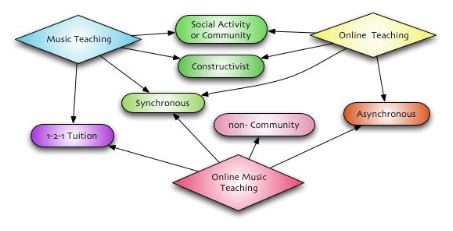
Fig. 2 Mapping of main concepts for the constituent
parts of Online Music Teaching
The arrows mapping the main concepts
and where the area overlaps are. As can be seen from fig. 2. there are
several overlaps between Music Teaching and Online Teaching that are not
replicated in Online Music Teaching at this current time.
Music Teaching is fundamentally a social activity, most musicians aspire
to play with other people, the current move in online environments is
community and it’s social aspects. Online instrumental teaching as
yet has not adopted this, instead still focusing on the technologies.
However, as can be seen from the diagram, online music teaching can be
asynchronous, as can online community, but traditionally instrumental
music teaching is done face to face. Although learning can take place
from books this is a different concept from traditional face to face teaching.
The research being performed in this paper accessed members of two ready
made communities, www.mudcat.org and the Bellows Pipes Newsgroup in Yahoo.co.uk.
The purpose of the case study within this paper was to address the hypotheses
stated earlier and to raise awareness and understanding of their issues.
Case Study
This case study used various iterations of a tune learning
website presented to a variety of people to evaluate what multimedia components
most aided the learner in learning a tune online. A web site was created
to teach folk tunes, specifically, but not exclusively to Scottish Smallpipe
players. Four scenarios of multimedia content were created in this website:
1. Audio
2. Audio and visual
3. Audio, visual and text
4. Graphical and midi (computer generated audio)
Four different slow airs were selected for each scenario;
tunes of the same type were chosen to remove the variable of tune difficulty
from the equation Thus the motivation for the learner was goal driven.
Care was taken to make this a proximal goal (cf Hodges 2004).
Scenario 1: Audio
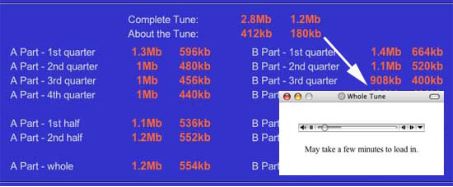
fig. 3 Tune taught in an audio style (Farewell to the Astra)
The teaching style for this tune was purely audio. The player clicks on the file size and the mp3 is played. The tune was available in it’s entirety and also broken down into separate two bar phrases. (see fig. 3) This technique of learning by ear is a very common method of handing down music through generations of folk musicians, it is not so common amongst players who have gone through the much more formal and written “classical training”.
Scenario 2: Audio and Visual
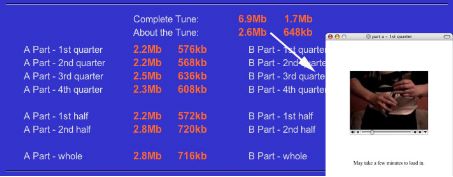
fig. 4 Tune taught in an audio / visual style (The Golden Birch)
This scenario was aimed at visual learners. As with previous
scenario, the learner clicked on the file size, which this time brought
up a small video close up on fingers of the tune being played. As before
the tune was available in it’s entirety and also broken down into
separate two bar phrases (see fig. 4). The theory behind this allows the
visual leaner to watch the fingering of the tune as it is being played.
This is the same as the first scenario, but with the addition of video.
Scenario 3: Audio, visual and text
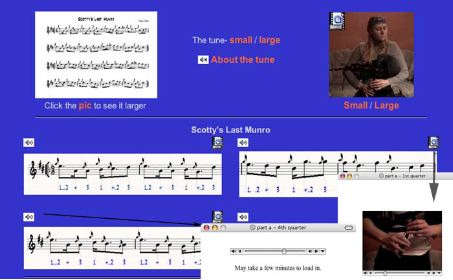
fig. 5 Tune taught in an audio, visual and text style (Scotty’s Last
Munro)
The third style added written notation to both mp3s and movie clips. This combined both the previous styles of audio and visual, with written. Again the tune was played in full and broken down into two bar phrases. (see fig. 5)
Scenario 4: Graphical and midi (computer generated audio)
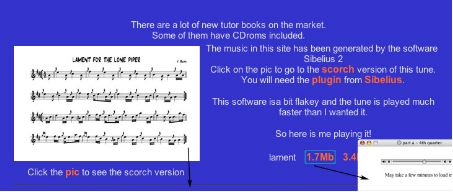
fig. 6 Graphical and midi (computer generated audio) (Lament
for the Lone Piper)
Lament for the Lone Piper was added to the web site to show a different use of technology. See fig. 6) Using the music publishing program called Sibelius it is possible to publish tunes on a web site. This software gives playback using midi. It also provides the graphical notation and the ability to transpose the music into a different key (graphically and aurally). see fig. 7.
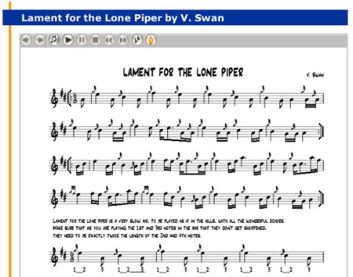
fig. 7 Tune taught using the Sibelius music publishing software.
Once the site was completed it was advertised in several different places on the internet, including www.mudcat.org, a pipers newsgroup and in person with the Lowland and Borders Pipers Society. All people contacted for this study were given access to all scenarios from the website. If slow internet connection was a problem then a CD rom of the web site was sent to any person that requested it. The learners were asked to answer four questions after attempting each tune.
1. What did the you do?
Did you browse the whole page? Did you learn the tune?
2. What did the you learn?
Did you manage to learn the tune? Did you learn anything new about the pipes or playing?
3. Was it worthwhile?
Did you enjoy learning the tune in this way? Would you like to see more tunes like this?
4. Do you come from a reading or oral background of playing?
In the mudcat community a separate thread was provided so that the community members could feedback. An e-mail address was also provided for all learners to give feedback.
Data Collection and Analysis
The initial response was good, many people expressed an interest
in the web site. At this point, even before reaching any musical outcomes,
two major difficulties were encountered with the technology;
1. The web site was created using an Apple Mac and the first problem encountered was for the people using PC’s. The movies and mp3s all needed to be played using a piece of software called Quicktime. Although links were given to be able to download this, it was a major stumbling block for many people.
2. Bandwidth was an issue for many people, although the files were compressed, they had to retain enough quality of sound and detail to be good enough to learn the tunes from. This meant that the files were still usually between 400kb and 2 Mb. Even with compression these files would take between 10 minutes and an hour to download.
To counter the problem of bandwidth the web site was transferred onto
a CD rom and posted out to people. This would seem like a good solution,
but again, not everyone could get the disk to work. Although all the materials
were provided on the disk, some computers insisted on trying to connect
to the internet. It was found that users would give up relatively quickly
if the site did not work readily. The added confusion and effort that
the participant had to experience would have compromised the proximal
event intended. (cf Hodges 2004).
For those participants that either did not experience access problems,
or who managed to over come them, the response was extremely favourable.
The following is a case study of a participant in America (referred to
as Mr A) who followed the entire site through giving feedback on each
of the four tunes. For the transcript of the communications for this case
study see Appendix II.
Mr A was contacted through the Bellowspipes Newsgoup. He followed all
the instructions on the web site and recorded all four of the tunes. Interestingly
Mr A did not do all the tunes in order, but was very thorough in reading
through all the whole page before learning the tune. On occasion Mr A
left the norm of textual e-mailing and corresponded in voice mail, this
happened whenever he was recording a tune for the study. A possible reason
for this departure from text could well be that he was responding to the
stimulus from the web site, which was very much audio learning. From learning
all four tunes in this case the best method was to have the sheet music
and the videos open;
“I found myself finally having your video and the sheet music both open on my laptop at the same time. This really works for me and is an incredibly rich way to learn.” (Mr A 2004)
Although Mr A liked to have the videos, Mr B (a piper who responded via an online blog) said;
“I think the best system for the myself as a lonely piper is the scorch system, in that one has the dots to help the initial memorising, the audio to key it in to the brain, and one can slow it right down if you want to. The videos are probably ok if you can project them but as has been said it's a bit difficult if yer optiks are not 20/20. The pure audio is ok for experienced and non music reading pipers but could cause one or two problems if you don't have the same pitch pipes, mainly for the gracing and such.” (Mr B 2004)
This was almost directly the opposite, the part in common however being that the audio alone was not enough. Ms C (a piper contacted via Mudcat.org) however stated that;
“I liked Scotty’s Last Munro the best. Although I didn’t use the videos much, I found it really useful to be able to listen to a phrase and then be able to read it at the same time. I did like the bit in Farewell to the Astra where there were two bars and then four bars and then the whole part....”(Ms C 2004)
Already there is a pattern forming. The three players are all homing in on the audio aspect and the written notation aspect as being the salient parts to learning the tunes online. Matti Ruippo from the Sibelius Academy however states that;
“It is not practical to build distance music studies upon a single method or medium. The teacher needs to support different learning styles and curves.” (Ruippo 2003:7)
The findings of this case study suggested that the participants coming
from within online communities (ie Mudcat and the Bellowspipes Newsgroup)
gave a more positive feedback of their experience and their learning outcomes
than did the non-online community participants. This would suggest that
some sort of basic community, (ie. a forum for the learner to share and
discuss their ideas with other people) may be beneficial or perhaps even
requisite to the success of the learner.
The responses of the participants taken as a whole suggested that a variety
of multimedia is required to cater for their varying learning styles.
Ruippo (2003) tries to engage in many different methods of communication;
“E-mail, Selection of software, Interactive Internet Learning Platform, Net conference Software including collaboration tools, Video & Audio - production tools, Telephone, TV/Radio, Videoconference unit, Net cast-production unit” (Ruippo 2003)
Sundberg’s paper also recognised the plethora of communication media tools by stating that;
“Although several modes of distance communication were available to the participants-Web site with discussion board, telephone, fax, and mail-the participants reported a preference for e-mail.” (Sundberg, C. 2002)
However neither of these seriously entertain the notion of community
that the previous findings suggest are so important.
Finally an interesting finding was that the acoustic audio recording was
seen as more valuable than the midi representation available in scenario
4.
Relating
the findings to the three hypothesis
1. It is possible (in the first instance) to teach instrumental music
online.
It can be seen that it is possible to teach music online as Mr A says;
“I must say this is the internet at its best. No doubt your concept to teach this way is brilliant! Isn't it incredible that someone on the other side of the pond can learn from you almost as if being there.” (Mr A 2004)
Positives
- All the feedback that was given from people able to
access the site was positive and for the most part amazed at the exciting
possibilities this opened up.
- The tools that are currently available as sympathetic
to the development of online teaching / learning.
- The multimedia experience meant that movies and sound are now much easier to stream and broadcast over the internet.
Issues:
- Not everyone has the bandwidth to be able to access
the larger files that multimedia necessitates for learning this way.
- Although the learning tools exist, not everyone necessarily has the required software or even operating system to be able to access these tools.
On balance the findings of this study suggest that it is possible to teach a musical instrument online. The findings also suggest that the most effective resources for teaching are high in multimedia. At present this propensity towards multimedia is somewhat inhibited by the diversity of platforms, bandwidth and technology.
2. Community affects the success of learning an instrument
online.
This question was not investigated in depth as a community was
not created specifically for the purpose. The findings from the case study
tended to be more positive and frequent from those participants who were
contacted through a community. Although the number of participants was
really too few for any degree of certainty this would suggest that community
played a beneficial role of the participants’ experience.
3. It is possible with multimedia to cater for a
variety of different learning style.
This study assumed that a random sample of participants would precipitate
a variety of learning styles. The findings showed that the different participants
responded to different aspects of the multimedia provided thus supporting
the notions that (a) the participants had different learning styles and
(b) a variety of multimedia could support their different learning needs.
Analysing and Evaluating
the Methodology:
This study could be seen as a pilot research,
investigating some of the issues that would be required to run a full
scale research into this area. As such there is no way that the quantity
of data or the depth of control scenarios would stand up to the rigours
of statistical analysis, however it has provided significant insight into
the area concerned.
Action research will always throw up more issues than can be assessed in one investigation. There is always the possibility of too many variables within the actual research for a topic to be reasonably investigated. Particularly where research is practitioner based, unexpected findings can push the investigation in surprising directions.
The web site built for this investigation was advertised in Mudcat, the Bellowspipes Newsgroup and in a face to face meeting of the LBPS. At first the response from Mudcat was very favourable with most people coming up with helpful hints and suggestions, surprisingly however was the fact that the participants commented on the site and not the tunes themselves. The same was true of the bagpipe newsgroup, many people commented on the site, but a very small number completed the task set from start to finish. Within the groups that were asked to view and feedback on the site after face to face contact, a significant number of participants insisted on feeding back in the same manner: ie face to face, they wouldn’t feedback in an online context, even though e-mail was available. The purpose of choosing different groups with which to research was to ensure that a wide range of musicians was used.
The majority of people to respond to this investigation
were male. There are two number possible reasons for this.
- There is a large male population of Scottish Smallpipers.
- Traditionally computers are seen as a male orientated domain.
Corneliussen appears to supports this:
“Men are expected to have more interest, experience and knowledge about computers than women. Men are expected to be motivated by an understanding of computers as something useful, while women are expected to be motivated by an understanding of computers as something useful.”(Corneliussen, H. 2002:2)
The small percentage of participants, relative to the number of people invited, shows that it is not enough to create a web site, it also needs to appeal to it’s audience and give them something that they perceive they really want or need.
Strategies for Change and Improvement
The research undertaken has raised some very useful ideas for future
investigation. Further strategies for change and improvement could include
the following;
Community needs to be isolated and investigated more thoroughly,
using a far more robust and controlled community model. A larger community
now needs to be the target, rather than several smaller ones so that this
can be investigated more thoroughly.
There are so few Scottish Smallpipers available, that a wider range of
instrumentalists need to be included. Although Scottish Smallpipers were
used here, they were chosen to be representative of a more generic audience.
The web site used for this teaching now needs to look less like a research
web site and look like a finished site specifically for learning tunes.
There needs to be some method of feedback within the site itself, preferably
in the form of a community, but a bulletin board, guest book or blog may
be acceptable in the interim. This might be a major addition to the research
as the current site has no feedback mechanism built in
Technology is advancing very quickly and although the web site for this
study was created using new new software and made in a fairly simple way,
many people who have access to computers could still a couple of years
behind. Their software, hardware and internet could well not be up to
the to the latest specification and preclude them from easy access. The
strategy for coping with this is to try to make more comprehensive help
guides and installation guides for the software needed to view the movies
and sounds. Although the site created for this purpose was made as simple
as possible, content can always be tweaked to be made more understandable
for learners. This appears to be supported by Chen & Paul (2003);
“These and previous studies demonstrate the importance of individual differences as factor in the design of web-based instruction. Designers and instructors cannot assume that all students will automatically use web-based instructional programmes effectively” (Chen & Paul 2003)
The strategies outlined above hopefully would remove some of the bias included in this particular study. The greater numbers would not only improve the research data, but also in the realms of action research, provide an opportunity to stimulate further study as they share their own tunes and learning experiences.
Learning
Outcomes Evaluation
The body of the investigation was the act
of teaching instrumental tunes. A lot of the more remote learners were
discovered to be competent music readers, but, found the audio files invaluable.
From the four scenarios involved, the most successful was the audio, visual
and text style.
There have been many learning outcomes from this study. The original study was to investigate the learning styles of Scottish Smallpipers and relate this to learning online. The literature review showed that research in this area has neglected to take into account community of practise. The instrumental teaching world is a very long way behind in research and philosophical terms in online teaching.
There has been much research undertaken in evaluating different learning styles online, but this has not yet been transferred to the area of instrumental music teaching online. For this reason it is apparent that much more research needs to be undertaken in engaging instrumental learners in online environments. The outcome to the study is the need to alter the site that has been built and make it more community orientated to offer feedback and experiences between learners and tutor. This is has been a surprising outcome as the communities that were used to disseminate the site address were thought to be robust and established enough to act as a suitable conduit, this however was not the case as a larger number of participants would have been preferable.
The final dissemination of the information back into the bagpipe world will be a long one. It is hoped that this study will be published in various bagpipe journals, but it will involve rewriting to some extent. The dissemination will take some time and further research will need to be undertaken before it can be completed. The process of change and improvement is also a long task. This can be seen from the literature, there is plenty of readily available literature on ICT, but on combining music and ICT it can be seen that this area is several years behind.
Conclusion
The research from this investigation has shown that teaching instrumental
music online is a very valuable method of teaching. It indeed does connect
players together for learning that would not otherwise be able to swap
ideas and tunes. What was shown to be hard was to engage a learner in
this method if they were unsure of their computer skills. It was also
incredibly difficult to foster a community of learning. There are communities
around, but for most people they do not see this as learning environments.
People are very used to using text as their sole method of expression
and they find it difficult to use audio files as communication. Further
research needs to be undertaken in the area of community engagement. This
would be the next logical step, to take the lessons learned from this
study and place them within the context of a community and investigate
getting more people involved and learning, not only from the content,
but also from each other in a true Wenger (1998) style.
Computer compatibility is improving all the time as are software developments, so research into creating content that will work for as many people as possible should also be part of ongoing research.
References
Ally, M. Theories
and Practise of Online Learning (2004)
Anderson, J. See Boyd Barrett, O. & Scanlon, E. (1990)
Bainbridge et al see Smith, D. (1988)
Bandopadhyay, S. Distance
Education in Indian Music: feasibility and prospects (2000)
Boyd Barrett, O. & Scanlon, E. Computers and Learning
(1990) Milton Keynes (UK) Addison-Wesley Publishing Company
British Telecom www.bt.com
(2003)
Brooks, D. Web-Teaching. A guide to Designing Interactive Teaching
for the World Wide Web (1997) New York (USA) Plenum Press
Chen, S.Y. Paul R.J. Editorial: Individual differences
in web-based instruction—an overview (2003) British Journal of Educational
Technology Blackwell Publishing
Corneliussen, H. Negotiating
gender positions in the discourse of computing (2002)
Donner, P.
New Challenges in Music Net Pedagogy (2003)
Heppell, S. See Underwood, J. (1994)
Ho, W. Use of information technology and music learning
in the search for quality education (2004) British Journal of Educational
Technology Jan 2004
Hodges, C.B.
Designing
to Motivate: Motivational Techniques to Incorporate in E-Learning Experiences
(2004)
Kuehn, D. Collaboration
between Music and Technology Virtual Master class and Performance.(2003)
Learn2pipe
(2004)
Mason, R. Using Communications Media in Open and Flexible
Learning (1994) London (UK) Kogan Page
Miller, F, SIMPLE: a
proposal for a Synchronous Internet Music Performance Learning Environment
(2002)
Monteith, M. IT for Learning enhancement (1998) Exeter (UK) Intellect
Ltd
Rovai, A.
International Review of Research in Open and Distance Learning (2002)
Ruippo, M.
Music
Education Online (2003)
Ruippo, M. Music
studies in synchronous learning environments (2002)
Smith, D. New Technologies and Professional Combinations
in (1988) Education Greenwich (UK) NCET
Spruce, G. Teaching Music (1996) London (UK) Routledge
Sundberg, C. Utilization
of Communication Technologies to Facilitate Follow-up to On-site Professional
Development (2002)
Swanwick, K. A basis for Music Education (1979) London
(UK) NFER Publishing Company
Swanwick, K. See Spruce, G. (1996)
Underwood, J, Computer Based Learning - Potential into
Practice (1994) London (UK) David Fulton Publishers
Warren, H. Africa
Bookcase (1997)
Wenger, E. Communities of Practice. Learning, Meaning
and Identity(1998) Cambridge (UK) Cambridge University Press
Williams, N. See Monteith, M. (1998)
1 Online
Community - teaching within an online community, including all socialising
and peer involvment.
2
The Internet - teaching using web sites uploaded on the internet and only
minimal e-mail contact between tutor and student.
